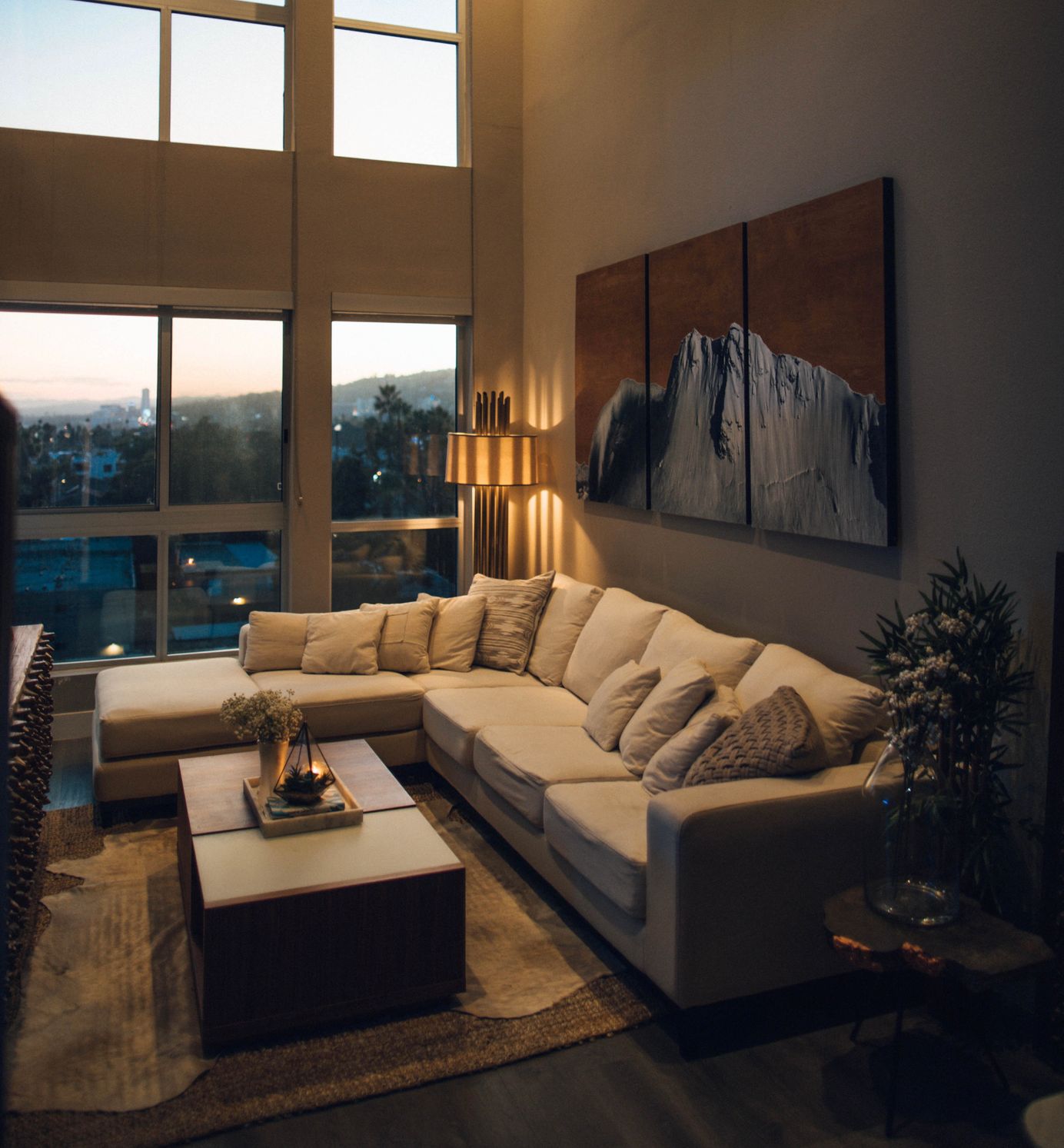
How to Use Lighting to Create a Cozy and Inviting Living Room
Curating the perfect combination of lighting can do wonders for your living space. Use this guide to help you select the perfect lighting to create a warm and inviting atmosphere for your living room.
Living rooms are the focal point of the home. As a versatile space, it's a place where we can entertain, unwind, or complete the odd task from work. That’s why it is essential to not only optimize the quality of light in your living room but also to select the perfect lighting to create an inviting and comfortable atmosphere.
Step 1: The Three Layers of Light
With all the activities that take place in the living room, you’ll need a variety of light. This can seem daunting when you have to choose from a plethora of light bulb options. An easy way to get started is to first understand the functions of the three different layers of light.
The Three Layers of Light include:
- Ambient Lighting
- Task Lighting
- Accent Lighting
Ambient lighting, or general lighting, provides an overall comfortable level of light. It is usually the room’s largest source of light, placed either in the center of the ceiling or off to the side as a lampstand. It is also the best place to start when planning the lighting of your room. Next comes task lighting, which allows you to see more clearly while absorbed in a book or an assignment, as it supplies the direct and intense light that is required for detailed work. Lastly, accent lighting provides a spotlight for the unique features in your home, such as a mantel or a piece of artwork you’d like to draw attention to.
Step 2: Create Ambient Lighting with Light Fixtures
To create an even layer of illumination in your living room, the most efficient way is to install a central lighting fixture. A flush mount or semi-flush mount ceiling light in the center of the ceiling are dependable choices. Though, a chandelier or a large decorative pendant light are also great options to consider. They provide the same function of lighting as ceiling fixtures while also serving as compelling statement pieces for your living room.
Lampstands can also be sources of ambient light. These features also provide a level of convenience as their lightbulbs are easy to change. Because they often can’t be placed in the center of the room, the lighting is usually uneven. But this is not necessarily a problem; great room atmospheres can be achieved with uneven lighting!
Since ambient lighting sets the mood, tinted warm style light bulbs are recommended. Light bulb tints are expressed in terms of Kelvin (K). In this case, 2300K incandescent antiques or LEDs are what you’re looking for. Dipped LED lights with 3500K, which technically gives off a white light, can also serve as ambient light since their bottom-mirrored finish (usually chrome or gold) tints the light. In terms of watts, best to go with 30-60 watts for incandescent, 4 watts for LEDs.
Want to up your ambient lighting game even further? Use a dimmer switch that allows you to easily control the brightness of the light. Depending on what the occasion requires, you can change from low lighting (reserved for that special evening with your significant other) to bright and vibrant lighting (for your larger social gatherings).
Step 3: Add Task Lighting for Practical Benefits
As your source of directional light, task lighting is very important for reducing eye strain. If you’re big on reading like I am, pay attention here.
Both table lamps and floor lamps that have adjustable heads are ideal fixtures to provide this type of lighting. For optimal performance, place either a table lamp or floor lamp next to your reading perch to cast a localized light on whatever task you have on hand. You can also place an arc lamp either on the side or behind your sofa to add a modern artistic line to your living room.
Remember, the best way to aestheticize your living room is to have fun with it! Play around with the scale, material, and color when selecting your light fixtures. If you’re low on space, try installing wall sconces, which can add a jewel-like effect to your living room and allow you to introduce different materials to your living room, like glass, metal, or fabric. There is just one rule of thumb: 3500K light bulbs. They give off the cool white light ideal for reading.
Quick Tips:
- To estimate the minimum level of lumen, or light unit, for adequate task lighting, simply measure the square footage of your task area and multiply it by 50.
- Choose fixtures with moveable arms, shades, and portability to customize your workspace to your liking!
Step 4: Add Accent Lighting for Finishing Touches
Now, the final touch, accent lighting. Depending on brightness, tint, and focal objects, accent lighting can provide your living room with a diversity of expressions. They also have the added effect of combating any harshness from the brightness of task lighting. Use subtle track lighting to outline the shape of your living room for a sleek modern look, or draw the eye upward with accent lights below your curtain drapes, creating the illusion of high ceilings. Warm lights placed behind your household plants can transform your living room into tropical territory. The possibilities are endless.
Quick Tip:
- Try using the uber-trendy Edison bulbs, which look gorgeous in various types of fixtures, even if they have less light output.
Step 5: Enjoy Your Living Room
Once you’ve layered your lights into an aesthetically pleasing combination, take the time to enjoy your newly illuminated living room! Whether it’s playing board games with your friends or curling up with a best-seller in your armchair, at Tellus we want you to get the most out of your living space. Having your living room properly lit is just the place to start.








